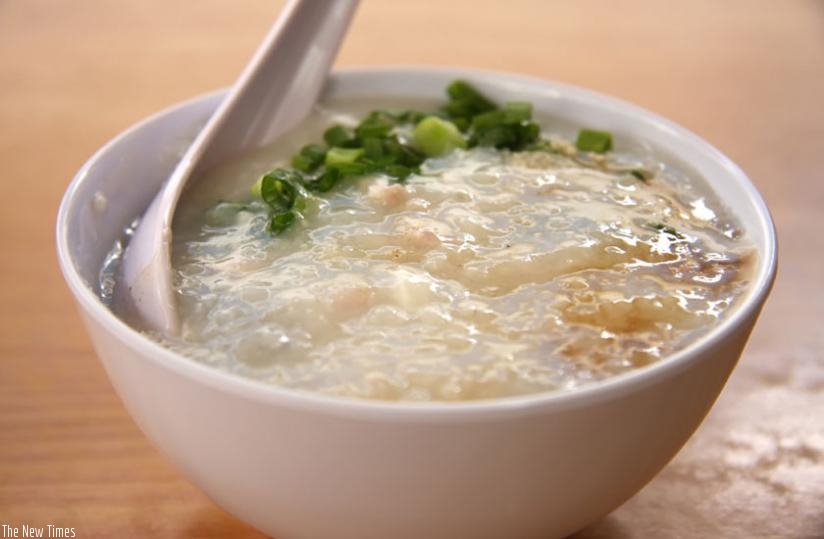Rice, whether boiled or fried, is available in most homes and restaurants in Rwanda. In fact some people have labeled it a ‘staple food’ in Rwanda. But did you know that besides the special taste and fragrance, rice has numerous nutritional benefits?


Rice, whether boiled or fried, is available in most homes and restaurants in Rwanda. In fact some people have labeled it a ‘staple food’ in Rwanda. But did you know that besides the special taste and fragrance, rice has numerous nutritional benefits?
Asiina Uhiriwe, a nurse at Kimironko Health Centre, points out that rice can be ground into flour and cooked to form rice porridge – a nutritious delicacy for infants.
"Rice porridge is good for children especially those who have constant episodes of diarrhoea,” Uhiriwe explains.
She adds that when one has diarrhoea, plenty of mineral salts are lost in the process which increases demand for food that can provide replacements to ensure osmotic balance.
"Obviously, the minerals in the porridge are many but those which are more beneficial occur in higher amounts.
Rice its self has a rich composition of copper, magnesium, calcium and selenium that are necessary for the body,” she adds.
Joseph Uwiragiye, a nutritionist at the University Teaching Hospital in Kigali, explains that using rice composition as a therapy for diarrhoea does not only stop with infants but also adults.
"Usually, rice is boiled and mashed with carrots. For adults the soup is necessary but for infants a composition of the porridge mixed with Beta carotene rich carrots should be availed,” Uwiragiye says.
He further points out that in the hospital setting, rice porridge is used during nutritional rehabilitation of infants but in home settings the portions are easy to mix for people of all age groups.
"If one has diarrhoea or dysentery, in the morning a sizeable portion of the porridge or soup should be taken, followed by another at mid day and in the evening. Once the diarrhoea subsidizes, the rice mixture should be stopped immediately but can be continued on reoccurrence,” he adds.
Uwiragiye, however, points out that during the process of nutritionally managing diarrhoea, medication as recommended by the doctors should be continued since rice porridge or soup therapy does not replace medical treatment.Nutritional composition of cooked rice
Well-cooked rice is plumb and nutritionally, rice contains negligible amounts of saturated fats, cholesterol and sodium with carbohydrates and traces of iron.According to studies, there are different types of rice but nutritional provisions are similar. For instance 100g of Basmati rice supply 120 calories. This energy comes from 3 per cent fat, 85 per cent carbohydrates and 12 per cent protein.
Enriched white rice contributes more than 15 vitamins and minerals, including folate and other B vitamins, iron and zinc to the diet.
Majority of findings reveal that about 100 calories per half-cup cooked serving are naturally free of gluten (complex proteins). Brown rice is a 100 percent whole grain food and white rice is enriched with important nutrients, including folic acid and iron.
Latest studies published in the journal of Food and Nutrition Sciences show that eating a daily portion of rice not only makes dieting easier but also is linked to improved general health.
However the research suggests that white or brown rice as part of their daily meals is more associated with eating more servings of fruit, vegetables, meat and beans.
Other clinical trials, in addition to the positive results in studies linking rice consumption with healthier diets, found that having white or brown rice at a meal increased feelings of fullness as compared to an equivalent solution of glucose.
Experts also recommend that both enriched white rice and whole grain brown rice should be consumed as part of a healthy diet.
Both enriched white rice and whole grain brown rice are considered nutrient-rich quality complex carbohydrates and can be part of a sustainable, plant-based diet that promotes ideal health.


